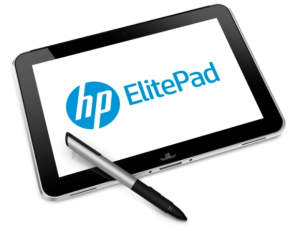Samsung scored 31.3 percent ownership in the third quarter. Apple could only muster 15 percent ownership.
 Samsung and Apple are dominating the smartphone market, new data from research firm IDC has revealed.
Samsung and Apple are dominating the smartphone market, new data from research firm IDC has revealed.
During the third quarter, Samsung shipped 56.3 million smartphones worldwide, helping it to secure 31.3 percent ownership of that space. Just a year prior, Samsung shipped 28.1 million handsets and nabbed 22.7 percent market ownership.
Samsung's shipments last quarter were strong enough to double Apple's share, which hit 15 percent on 26.9 million unit shipments. Last year, Apple shipped 17.1 million smartphones and nabbed 13.8 percent of the market.
After Apple, there isn't much to write home about in IDC's findings. Research In Motion held on to the third spot in IDC's study with 4.3 percent market share, but that's down from 9.6 ownership last year. China-based ZTE made it on the list in fourth place, but the company could only muster 4.2 percent share. HTC rounded out the top five with 4 percent market share.
Perhaps the most notable finding from IDC's study is not what companies are in the top five, but which firm is not. According to IDC, Nokia, for the first time, has dropped off the top five list of smartphone vendors.
"Nokia's share losses have meant gains for competitors," Kevin Restivo, senior research analyst with IDC, said in a statement. "The company's transition away from Symbian-powered smartphones to ones shipped with Windows Phone has left ample opportunity for rivals to steal share away from Nokia over the past 18 months."
That said, Restivo cautioned that the smartphone market is "still relatively nascent, which means there's room for multiple vendors and operating systems to flourish, including Nokia."
IDC didn't say how many smartphones Nokia shipped, but the research firm did reveal that it shipped a total of 82.9 million mobile handsets last quarter, down 22 percent compared to the 106.5 million it shipped in the third quarter of 2011.
All told, 179.7 million smartphones shipped last quarter, representing a whopping 45 percent gain over the prior year. Total mobile handset shipments reached 444.5 million last quarter, up just 2.4 percent compared to the 434.1 million shipped in 2011.

During the third quarter, Samsung shipped 56.3 million smartphones worldwide, helping it to secure 31.3 percent ownership of that space. Just a year prior, Samsung shipped 28.1 million handsets and nabbed 22.7 percent market ownership.
Samsung's shipments last quarter were strong enough to double Apple's share, which hit 15 percent on 26.9 million unit shipments. Last year, Apple shipped 17.1 million smartphones and nabbed 13.8 percent of the market.
After Apple, there isn't much to write home about in IDC's findings. Research In Motion held on to the third spot in IDC's study with 4.3 percent market share, but that's down from 9.6 ownership last year. China-based ZTE made it on the list in fourth place, but the company could only muster 4.2 percent share. HTC rounded out the top five with 4 percent market share.
Perhaps the most notable finding from IDC's study is not what companies are in the top five, but which firm is not. According to IDC, Nokia, for the first time, has dropped off the top five list of smartphone vendors.
"Nokia's share losses have meant gains for competitors," Kevin Restivo, senior research analyst with IDC, said in a statement. "The company's transition away from Symbian-powered smartphones to ones shipped with Windows Phone has left ample opportunity for rivals to steal share away from Nokia over the past 18 months."
That said, Restivo cautioned that the smartphone market is "still relatively nascent, which means there's room for multiple vendors and operating systems to flourish, including Nokia."
IDC didn't say how many smartphones Nokia shipped, but the research firm did reveal that it shipped a total of 82.9 million mobile handsets last quarter, down 22 percent compared to the 106.5 million it shipped in the third quarter of 2011.
All told, 179.7 million smartphones shipped last quarter, representing a whopping 45 percent gain over the prior year. Total mobile handset shipments reached 444.5 million last quarter, up just 2.4 percent compared to the 434.1 million shipped in 2011.









